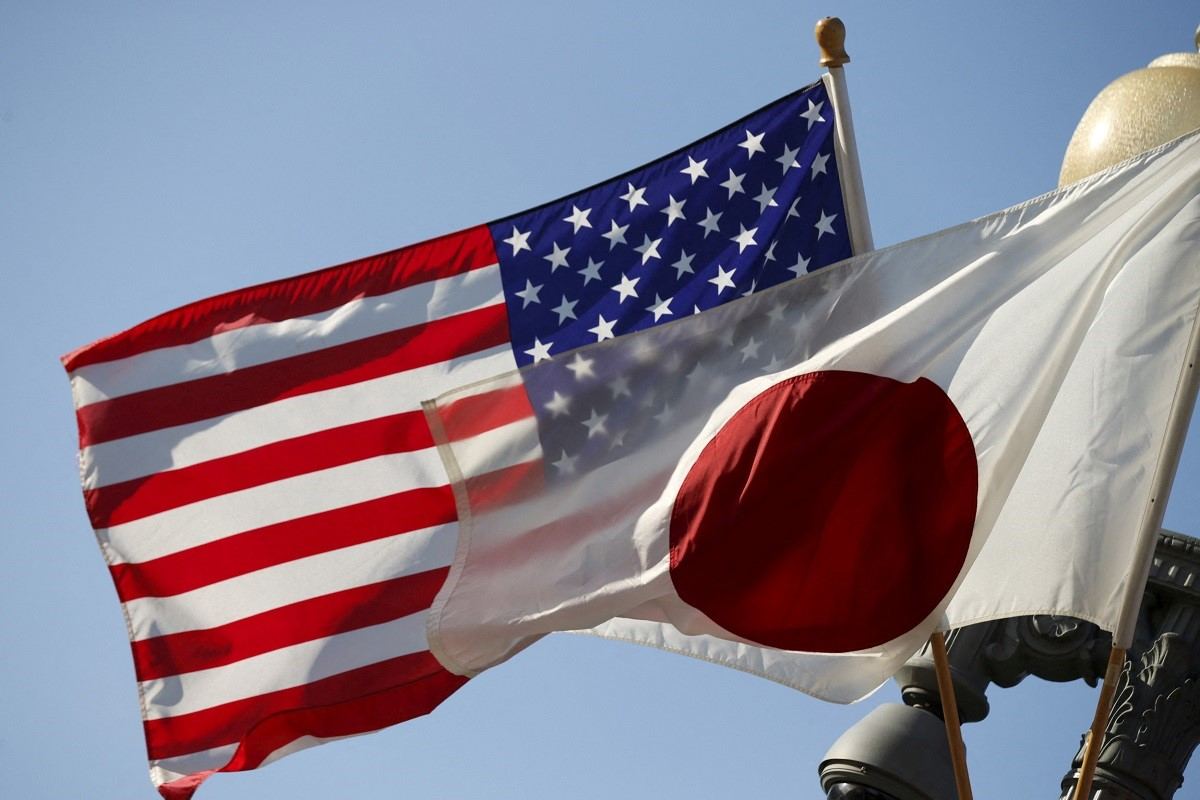Japan, U.S. to Reform Defense Command Structures; Moves Aimed to Enhance Mutual Cooperation

The U.S. and Japan flags fly together outside the White House in Washington April 27, 2015.
15:04 JST, April 11, 2024
WASHINGTON ― The Japan-U.S. joint statement issued by Prime Minister Fumio Kishida and President Joe Biden on Wednesday focuses on defense and security, vowing to modernize the bilateral alliance with deterrence against China in mind.
The Biden administration has positioned a revision of command and control of Japanese and U.S. forces in both peacetime and during contingencies as “one of the biggest changes since the signing of the Japan-U.S. security treaty,” according to a senior U.S. official. Behind this is the growing importance of the U.S. forces deployed in Japan as a major force on the front lines of operations regarding China.
In response to Japan’s establishment of the Self-Defense Forces Joint Operations Command at the end of fiscal 2024, the U.S. forces in Japan, which currently have no operational command authority, will increase the authority of their headquarters. Several concrete measures have been proposed, including the establishment of a new joint task force based in Japan.
In South Korea, command and control of the South Korean military and U.S. forces stationed there are integrated. In Japan, however, the SDF and U.S. forces are expected to keep their chains of command separate, even during contingencies.
James Schoff, senior director of the U.S.-Japan NEXT Alliance Initiative at Sasakawa Peace Foundation USA, said that by sharing intelligence and analyzing it together, Japan and the United States would greatly increase their capabilities and flexibility, and the two countries are expected to begin doing so in the cyber defense field in the future.
On the Japanese side, increasing target acquisition ability is essential for counterstrikes, and more sophisticated information sharing is expected to increase the SDF’s deterrence and coping capabilities.
However, there are differences of opinion within Washington over new command and control frameworks. The matter will be discussed at the ministerial level following the summit agreement, but the U.S. side may struggle with arrangements.
Meanwhile, Japan and the United States will convene a forum on defense industrial cooperation to bolster joint production systems amid tight production situations in the United States. The regular discussion will seek to identify production areas in which Japan can contribute, such as components of missiles and ammunition.
Japan may become an alternative to China as a supplier because the United States is eager to eliminate Chinese products from its military procurement. Japan hopes to expand sales channels for the domestic defense industry, which have been limited to the SDF, and strengthen its production base.
"Politics" POPULAR ARTICLE
-

Japan to Support Central Asian Logistics Route That Bypasses Russia, Plan to Be Part of Upcoming Summit in Tokyo
-

Japan to Tighten Screening of Foreigners’ Residential Status by Providing Information of Nonpayment of Taxes
-

Chinese, Russian Bombers Flew Unusual Path by Heading Toward Tokyo; Move Likely Meant to Intimidate Japan
-

Japan Plans National Database to Track Foreign Ownership of Real Estate, Land as It Weighs New Rules
-

Up to 199,000 Deaths Estimated From Mega-Tsunami; Most Recent Occurrence Took Place in 17th Century
JN ACCESS RANKING
-

Tokyo Economic Security Forum to Hold Inaugural Meeting Amid Tense Global Environment
-

Keidanren Chairman Yoshinobu Tsutsui Visits Kashiwazaki-Kariwa Nuclear Power Plant; Inspects New Emergency Safety System
-

Imports of Rare Earths from China Facing Delays, May Be Caused by Deterioration of Japan-China Relations
-

University of Tokyo Professor Discusses Japanese Economic Security in Interview Ahead of Forum
-

Japan Pulls out of Vietnam Nuclear Project, Complicating Hanoi’s Power Plans























